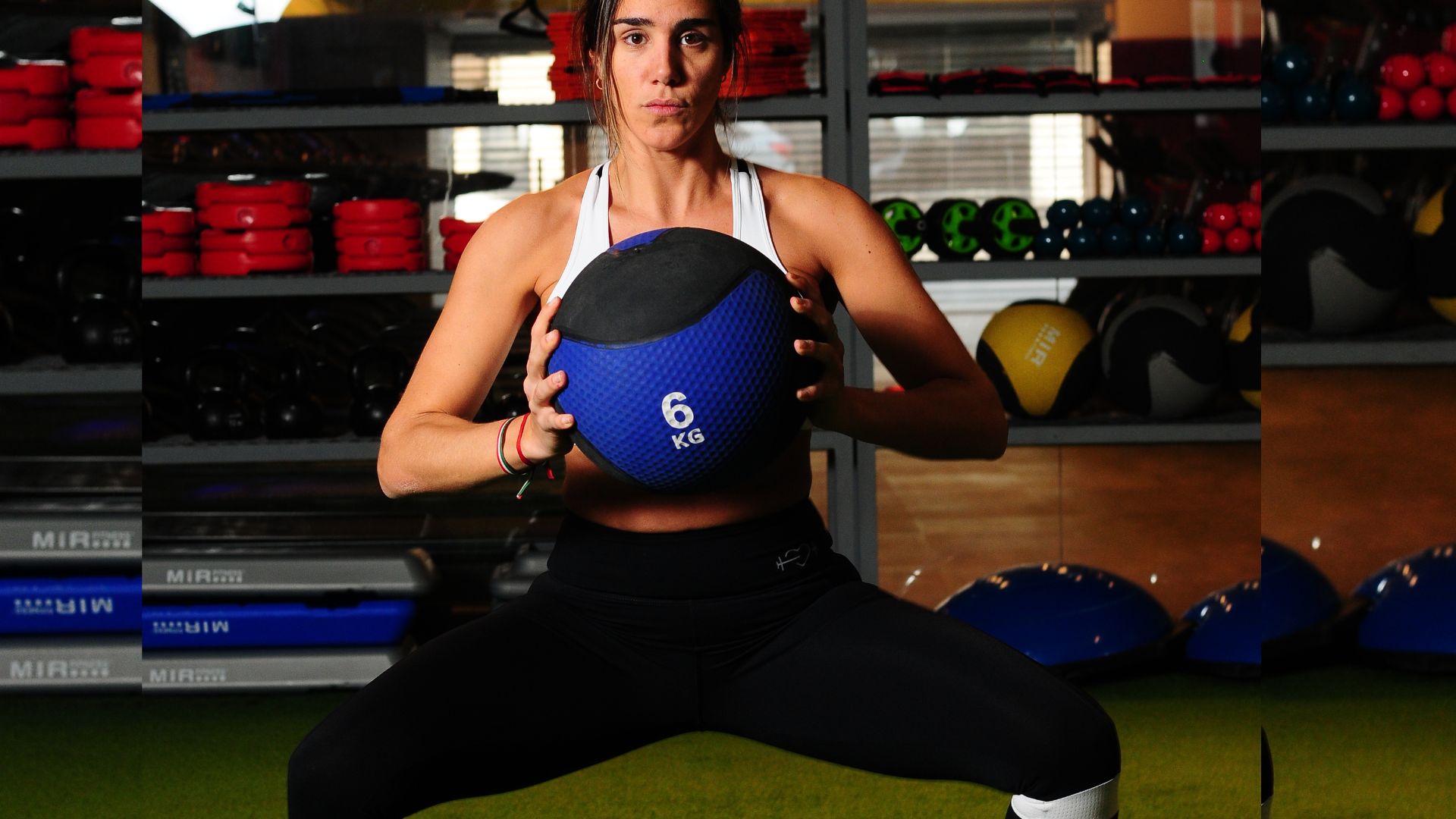If you’re a fitness enthusiast or someone looking to get into strength training, you may have wondered, “How much should I squat if I’m 28 years old?” Squats are an excellent exercise for building lower body strength and muscle mass.
However, the weight you should squat depends on several factors, including your age, fitness level, and goals. In this article, we’ll explore the ideal squatting range for a 28-year-old individual and provide useful insights to help you maximize your squatting potential.
The appropriate weight to squat varies depending on factors such as your current fitness level, experience with weightlifting, and overall strength. As a 28-year-old, it is important to focus on proper form and technique rather than aiming for a specific weight. Gradually increase the weight you squat over time, ensuring that you maintain good form and avoid injury. Consulting with a qualified fitness professional can help tailor a squatting program to your individual needs.
It depends on your current fitness level.
When determining the appropriate weight to squat, consider the following factors:
Current fitness level: Assess your overall strength and fitness level to establish a starting point.
Experience with weightlifting: If you’re new to weightlifting, start with lighter weights to focus on proper form and technique. If you have prior experience, you may be able to handle heavier weights.
Overall strength: Take into account your overall strength in your lower body, particularly in your legs and core.
Increase weight gradually.
To gradually increase weight and maintain good form:
Start with a weight that challenges you but allows you to perform the exercise with proper form.
Progressively increase the weight in small increments, such as 5-10 pounds (2.5-5 kg), over time as your strength improves.
Focus on maintaining proper form throughout the entire movement, ensuring your knees track over your toes, your back remains straight, and you engage your core.
Prioritize consistency and regularity in your workouts, allowing your muscles to adapt and grow stronger.
Example.
Here’s an example to illustrate the progression:
Let’s say you start with a 45-pound (20 kg) barbell without any additional weight plates. As you become comfortable with this weight and your form improves, you can gradually add weight.
For example, after a few weeks, you might add a 10-pound (4.5 kg) weight plate on each side, totaling 65 pounds (30 kg). Over time, you can continue increasing the weight incrementally based on your progress and goals.
Remember, it’s crucial to listen to your body, be patient, and not rush the process. Working with a qualified fitness professional can provide personalized guidance and ensure safe and effective progression.

Why is it crucial to Consult with a qualified professional?
why is Consulting with a qualified fitness professional can help tailor a squatting program to your individual needs? we explain the reasons why this crucial, what to consider and examples below.
Consulting with a qualified fitness professional for a tailored squatting program is crucial for several reasons:
Individualized approach:
A fitness professional can assess your specific needs, goals, and limitations. They can consider factors like your fitness level, previous injuries, and any medical conditions to create a program that suits your abilities and promotes safe progression.
Proper form and technique:
Squatting with incorrect form can lead to injuries and limit your progress. A fitness professional can teach you the correct form, provide cues, and make adjustments to ensure you perform the exercise with optimal technique.
Injury prevention:
If you have any existing injuries or limitations, a fitness professional can modify the squatting program accordingly. They can suggest variations, alternate exercises, or implement specific mobility and flexibility exercises to minimize the risk of further injury and promote proper recovery.
Progressive overload:
Gradually increasing the weight and intensity of your squats is crucial for building strength and muscle.
A fitness professional can design a program that progressively challenges you, ensuring you make consistent gains without overexertion or plateaus.
Accountability and motivation:
Working with a fitness professional provides accountability and support. They can track your progress, make adjustments as needed, and provide motivation to keep you consistent and on track toward your squatting goals.
Examples of considerations a fitness professional might address in a tailored squatting program include:
- Assessing your movement patterns and addressing any muscle imbalances or mobility issues through corrective exercises.
- Incorporating warm-up and cool-down routines to prepare your body for the squats and aid in recovery.
- Designing a program that includes variations of squats (e.g., goblet squats, front squats) to target different muscle groups and prevent monotony.
- Determining the appropriate volume and frequency of squatting sessions based on your goals and recovery capacity.
- Periodizing your program to include phases of higher intensity and volume, as well as periods of deloading and recovery.
By working with a qualified fitness professional, you can ensure that your squatting program is customized to your needs, helping you achieve your goals effectively and safely.
Here’s a tabular format that provides information on how to determine the appropriate weight to squat, when to increase the weight, recommended considerations, and examples:
| Aspect | Description | Examples |
|---|---|---|
| Determining Weight | Consider factors such as current fitness level, experience with weightlifting, and overall strength. Focus on proper form and technique rather than a specific weight. | Assess your fitness level and experience. |
| Progression | Gradually increase weight over time as your strength improves. Start with a weight that challenges you but allows for proper form. | Start with a 45-pound (20 kg) barbell. |
| Form and Technique | Maintain proper form throughout the exercise, ensuring knees track over toes, back remains straight, and core is engaged. | Squat with knees aligned and back straight. |
| Increasing Weight | Increase weight in small increments, like 5-10 pounds (2.5-5 kg), as you progress. Avoid rapid jumps in weight to prevent injury. | Add 10-pound (4.5 kg) plates on each side. |
| Considerations | Individualize your approach based on fitness level, injuries, and limitations. Focus on consistency, regularity, and gradual progress. | Modify the program for existing injuries. |
| Fitness Professional | Consulting with a qualified fitness professional provides personalized guidance and ensures safe and effective progression tailored to your needs, while providing accountability and support. | Work with a fitness professional for guidance. |
I hope this tabular format helps to organize the information for you. If you have any further questions or need additional clarification, feel free to ask!
Conclusion.
In conclusion, consulting with a qualified fitness professional is crucial when it comes to developing a squatting program that is tailored to your individual needs.
They provide invaluable expertise and guidance to ensure proper form, prevent injuries, and promote optimal progress.
With their help, you can address any limitations or injuries, receive personalized adjustments and modifications, and benefit from a structured program that incorporates progressive overload.
By investing in professional guidance, you can maximize the effectiveness of your squatting routine and achieve your fitness goals safely and efficiently.

Hey there, it’s Mike Rrsq, the Editor-in-Chief over at Jsquat.com, and I’m absolutely obsessed with all things squat fitness! I’ve been lucky enough to get some serious recognition for my work in this field. With a solid background in the fitness and wellness industry, I’ve been there right from the get-go, helping shape this website into what it is today.
You see, I’m not just the boss around here; I’m also a passionate contributor. I love sharing my insights through my articles, and trust me, they’re not your run-of-the-mill stuff. Each piece I write is a labor of love, filled with my expertise and real-world experience in the fitness universe. So, if you’re into fitness and looking for some inspiration, you’re in the right place!

